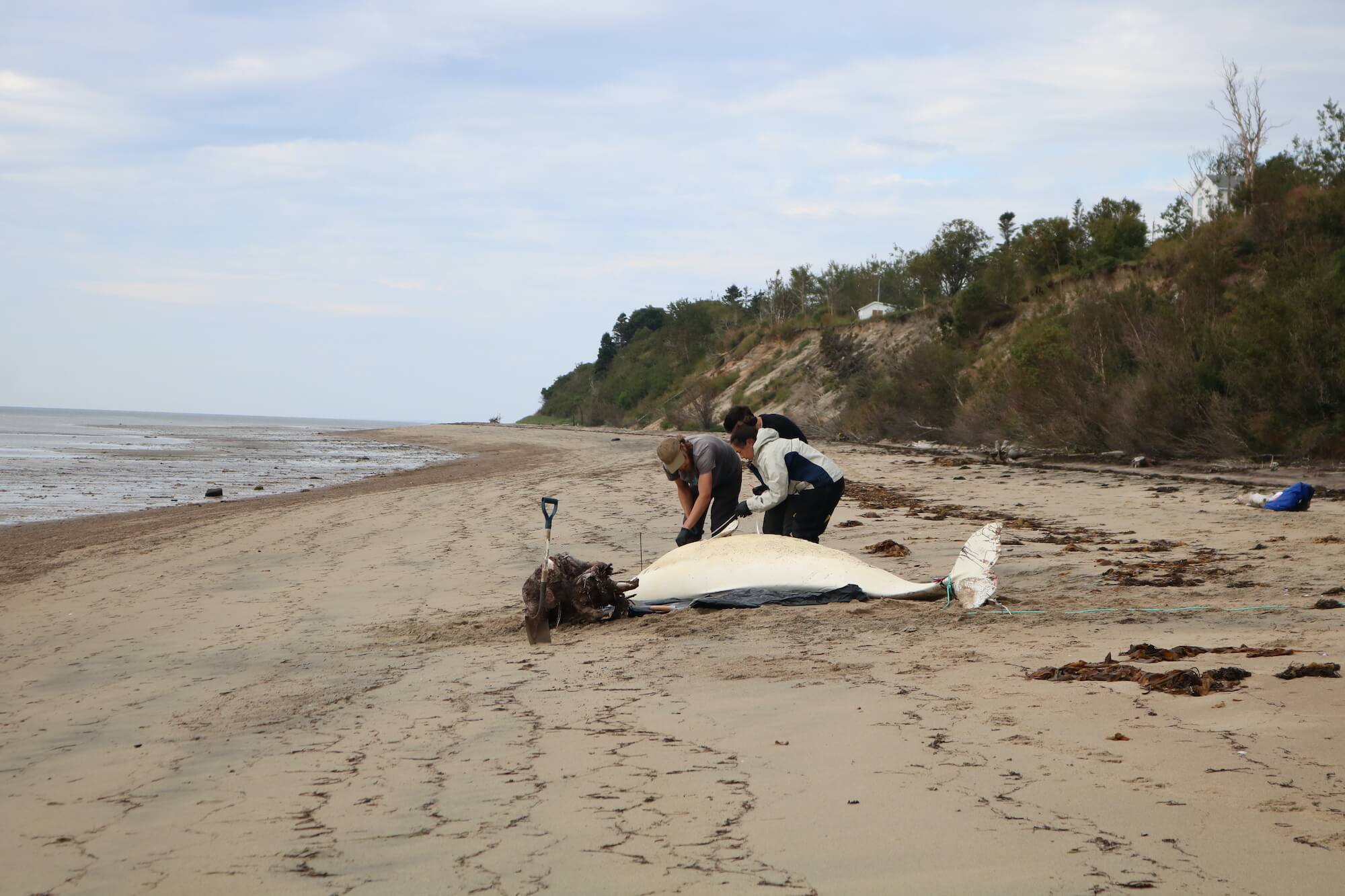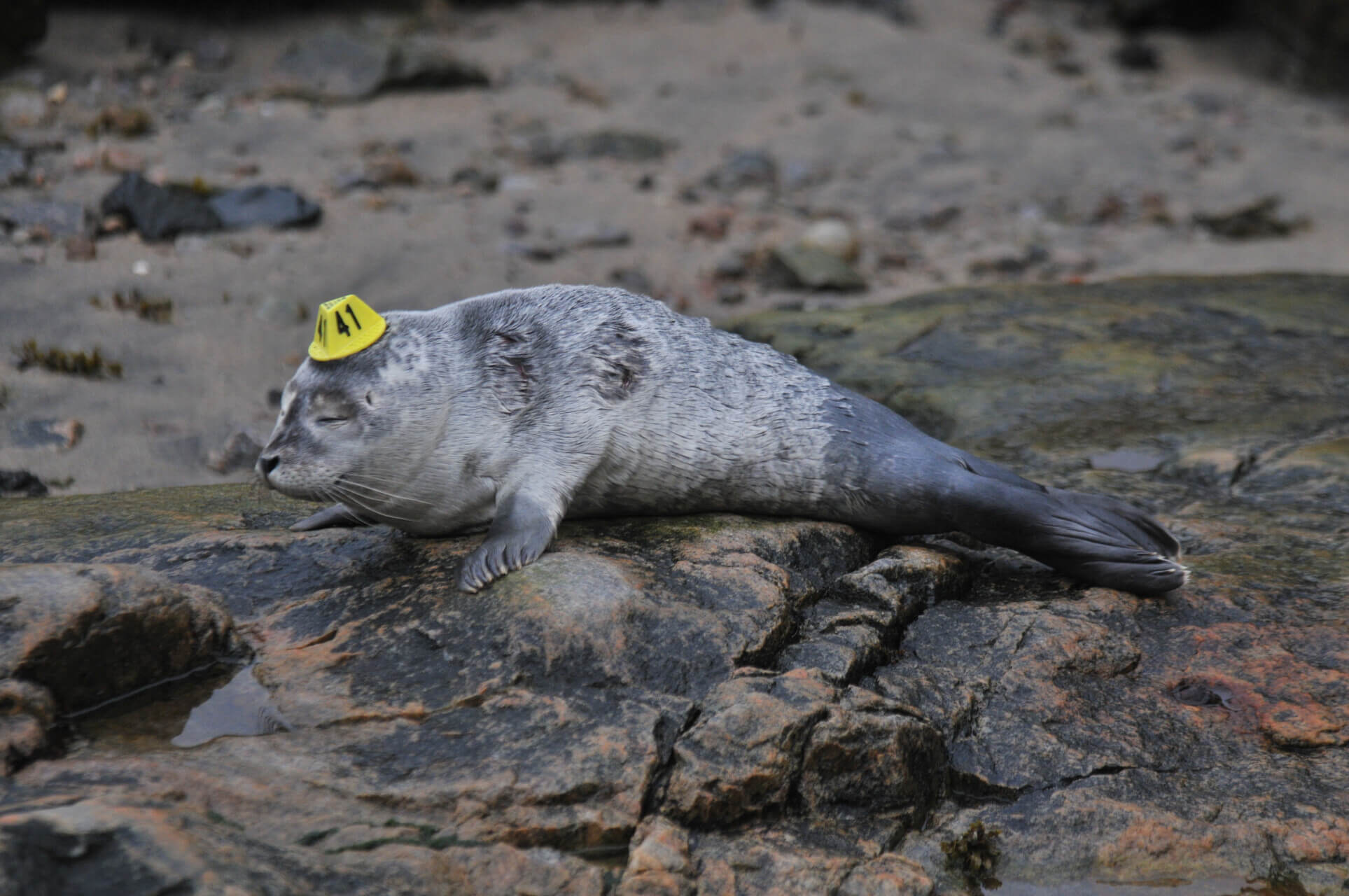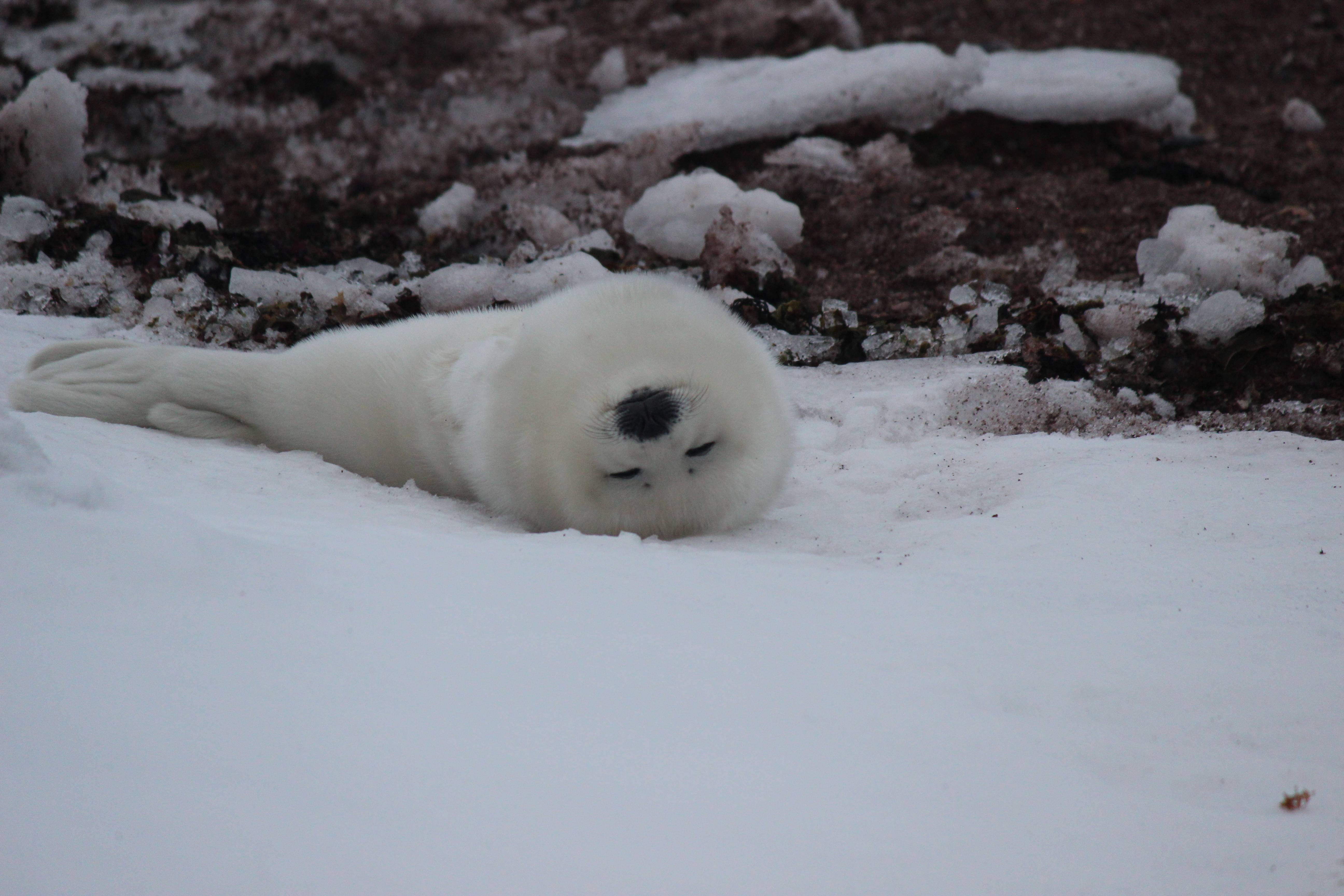Since early April, Marine Mammal Emergencies has handled three cases involving seal carcasses: two in Sept-Îles and one in Sainte-Anne-des-Monts. There is no systematic recovery program for seal carcasses, though every incident is documented. For any given case, a volunteer is dispatched to the site of stranding to take photos, measurements and place a numbered tag around the leg of the seal. That way, if it is taken away by the tide and washes up onto shore somewhere else, it is possible to connect the dots and “track” the carcass.
A skull to identify the species
Photos taken by volunteers help the Quebec Marine Mammal Emergency Response Network team acquire information on the species of seal as well as the animal’s stage of development: neonatal, juvenile or adult. Indeed, in some seal species, changes in the animal’s coat are an indicator as to how many days or months old it is. Length is a parameter used to confirm this information, provided of course that the seal is whole. In the case of the carcass in Sept-Îles, the head was missing. Data are therefore sketchy. Meanwhile, the carcass in Sainte-Anne-des-Monts was in an advanced state of decomposition. The coat was unrecognizable, but fortunately, the skull was present and well exposed.

The skull is an essential part of the body to identify the species of seal: harp, harbour, hooded or gray? The teeth of the lower jaw confirm the ID. For example, the harbour seal has molars with four cusps; in other words, the teeth in the back of the jaw, in the cheek, each have four sharp points. The gray seal has but one main cusp on its molars and its canines are massive. The harp seal has “tricuspid” teeth, while those of the hooded seal are rather rounded in shape, close together and set deep in the jaw bone.
A live seal showing its teeth: what is it telling us?

On April 25, a live young harp seal came ashore for a few minutes on the Clarke City beach, in the Sept-Îles region. Its presence sparked the curiosity of a few passers-by, who approached the animal. According to one of the witnesses, the animal was not wary, but opened its mouth and showed its teeth. How should we interpret such behaviour? It is recalled that harp seals are known to not be easily frightened by the presence of humans. They will not necessarily retreat back to the sea if approached. Rather, they will raise their heads and carefully keep an eye on your movements. Bear in mind that these are wild animals and experts warn that even if they are small and appear harmless and endearing, these seals can be aggressive. That said, if you hear them grunt, vocalize or if they show their teeth when you approach, these are signs that they are disturbed by your presence. It is therefore important to move away and maintain a minimum distance of 50 metres for your safety and for the welfare of the animal. A seal that is continually approached has no chance to rest and repeated interactions with humans increase their stress and make them more vulnerable.





